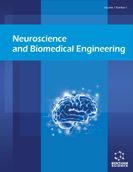Abstract
Background: Discovering mechanism of pathogenesis, growth or metastasis of triplenegative breast cancer (TNBC) is necessary to establish future therapy. An effective analysis is required for microarray information to identify genes highly involved to a disease phenotype from thousands of genes. Methods: We have applied self-organizing map, a clustering method that could simplify complex high-dimensional data as concise low-dimensional and graphical maps, for analysis of large amounts of microarray data. In this study, similarities of expression data of the genes expressing in breast cancer were visually represented by spherical self-organizing map (sSOM). Results: sSOM presented transcription factor MYBL1 as an inversely-related gene to estrogen receptor (ER) and human epidermal growth factor receptor 2 (HER2) associating itself to subtypes of breast cancer. MYBL1 correlated to cell growth related genes including Wnt/β-catenin signal or cancer stem cell-associated gene CD44, implying its involvement in the growth of TNBC. Conclusion: sSOM showed transcription factor MYBL1 has negatively related to expression pattern to ER/HER2 and associates itself with other cell growth related genes in breast cancer.
Keywords: Breast cancer, microarray, MYBL1, self-organizing map, TNBC, Wnt.
Graphical Abstract
 25
25

